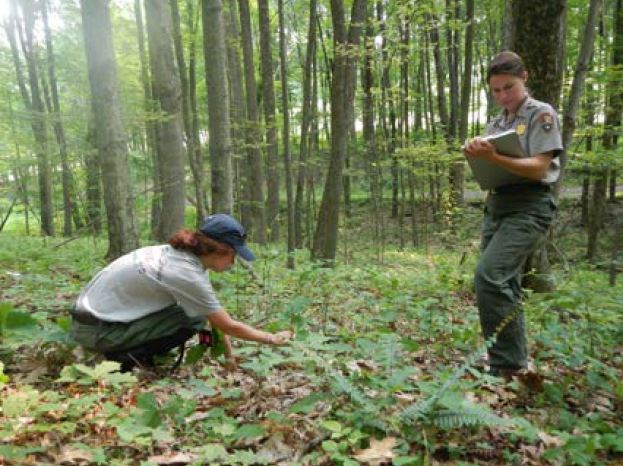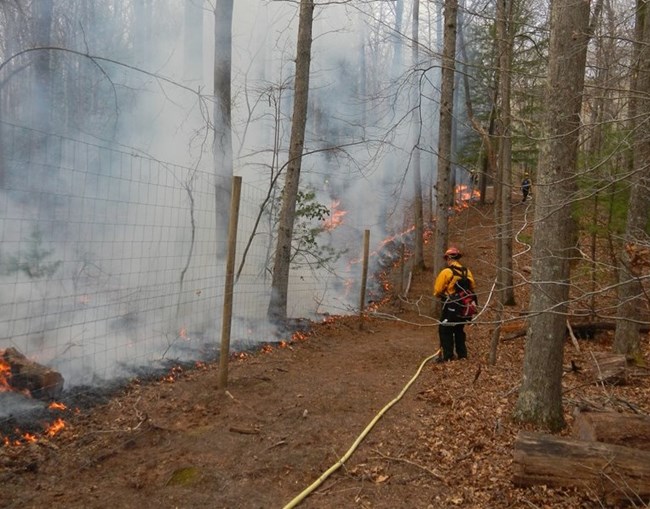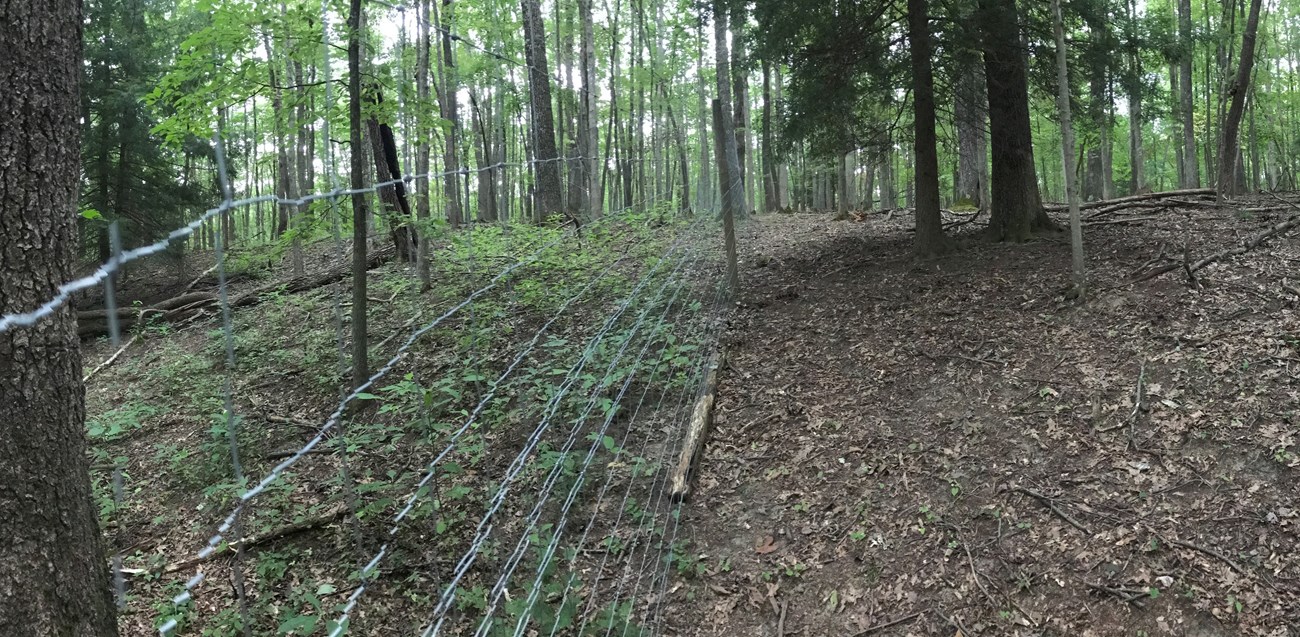Last updated: August 21, 2024
Article
Protecting Oak Forests in National Parks

NPS
At most scenic overlooks in the Appalachian Mountains, the rolling green ridgetops you see stretching towards the horizon are covered with oak trees. Oak forests are important regional resources because they support diverse communities of animals and plants, with more than 100 animal species relying on acorns as crucial food sources and more than 500 native butterfly and moth species whose larvae feed on oak leaves. Since oak trees support so many insects, they also host a rich diversity of birds who feast on those insects.
However, the future of oak forests is uncertain due to mesophication – a region-wide trend in which forests lose their oak trees, shifting to shade-tolerant, mesic trees such as maples. This change is caused by decades of fire suppression, over-abundant deer herds, increasing regional precipitation, losses in keystone animal and plant species, and less flammable leaf litter on the forest floor. As a result, there aren’t enough oak saplings and seedlings to replace the mature oak trees as they die.
Exploring management options for oak forests

NPS
New River Gorge National Park and Preserve is experimenting with ways to protect the next generation of oak forests using fire and fences at two mountaintop sites in the park. One of the sites, Grandview, contains a much larger deer population because hunting has been prohibited in the former state park for nearly a century. There is a long tradition of hunting at the other site, Backus, and the number of deer is much lower on that mountain.
First, forest ecologists collected information about the condition of the forest, by counting oak and maple tree seedlings and measuring mature trees in permanent plots that were revisited later in the study. At the beginning of the experiment, mature oak trees dominated the forest canopy, but maple seedlings were much more common than oak seedlings on the forest floor.

NPS
Then, tall deer exclosure fences were constructed at each site to keep deer out of 10-acre sections of forest. As the experiment continued, the forests inside the fences were compared to adjacent forests that were kept open to deer.
In the spring of 2017 and 2018, wildland fire specialists set controlled burns through some of the fenced forests and some of the unfenced forests. These controlled fires burned the leaf litter but did not harm the mature trees. The fires created good conditions on the ground for acorns to sprout.
Several years after the fences were installed and controlled burns were conducted, the same plots were measured again to see how the fire and fences affected the oak forests.
Fire promotes oak seedlings where deer are few

NPS
Controlled burns promoted oak seedlings and reduced maple seedlings only on Backus Mountain, where the deer population is moderate. At Grandview, where oak seedlings are stressed from frequent deer browse, fire caused worse declines in oak seedlings than in maple seedlings. This serves an important reminder that forest managers need to understand the condition of the forest before using prescribed fire.
The fences protected tree seedlings and other understory plants from deer browse. Four years after the fences were built, there were six times more seedlings taller than 1 foot inside the fences than in the surrounding unfenced forest. These tall seedlings will be the canopy trees of the future, if they can grow tall enough to escape being eaten by deer.

NPS
The fences also protected plants growing on the forest floor that are deer’s preferred food. Plants like cucumber root (Medeola virginiana), bellwort (Uvularia spp.), and fairybells (Prosartes spp.) were more common inside fenced forests. The plants on the forest floor are important to the biodiversity of Appalachian oak forests – there are six plant species on the forest floor for every one tree species found in the tree canopy!
This study has helped park managers protect oak forests by showing how controlled burns and deer herbivory affect tree regeneration and plant diversity in park forests. A group of park managers, forest ecologists, and wildland fire specialists are continuing to work together to monitor these sites and use additional controlled burns to promote the future oak forests.
To Learn More
You can learn more about the results of this study from a published paper, or explore background information on the oak regeneration project on IRMA.
Contact
Stephanie Perles, Plant Ecologist
Tags
- new river gorge national park & preserve
- im
- ermn
- vital sign
- monitoring
- vegetation
- forests
- forest health
- oak
- maple
- forest management
- forest regeneration
- regeneration
- prescribed fire
- prescribed burn
- deer exclosures
- exclusion fence
- fire effects monitoring
- neri
- new river gorge national park and preserve
- resilient forest management
- resilient forests initiative
